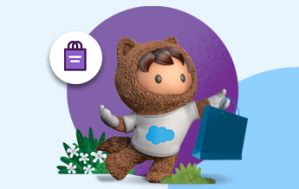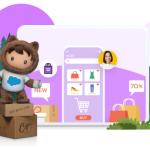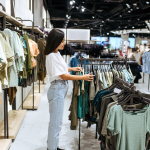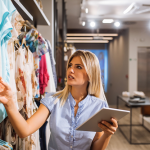NRF 2022 may have been a little quieter than usual, with some retailers avoiding travelling with the new Omicron variant in mind – yet that didn’t stop the gathering of the retail industry’s biggest players (some joining virtually) to discuss the most pressing topics impacting the sector, looking ahead to the next year and sharing their stories of innovation.
From the outset, there was a feeling of cautious hopefulness. Keynote speaker and Target CEO Brian Cornell set the tone, sharing that consumers were still flocking to stores to vote with their “wallet and their footsteps’ giving him ‘’incredible optimism’ that this will continue – despite the world still feeling the effects of COVID-19.
In this blog, we take a look at the biggest trends discussed at NRF 2022 from over 190 engaging sessions by 300 influential speakers to help you prepare for the year ahead…
Let’s Get Phygital
One thing became crystal clear at this year’s big show – online is offline as much as offline is online, as consumers have become comfortable jumping between web, mobile, social and visiting in-store.
With 80% of customers agreeing that the experience a company provides is as important as its products or services, the need for connected omnichannel (or ‘phygital’ – if the new NRF buzzword catches on) experiences that span digital and online worlds are more crucial then ever – retailers must meet shoppers where they are and provide relevant and seamless experiences across their shopping journeys. But where do you start?
If connected engagement is the end goal, you need to follow shoppers throughout their journey and remove friction from shopping by unifying data and systems. For some, this is a move to headless commerce to allow customers to discover, browse and buy in their channel of choice without the need to replicate data logic and code for each channel.
For others, they’re focusing on hyper-relevance – providing personalised experiences with predictive recommendations and acknowledgement of the individual at every marketing touchpoint. Team this with a ‘service anywhere’ mentality to assist customers at any point in the buying cycle – all the way from purchase through to returns and you’re on the right path to success.
To achieve all this, it’s crucial to have a unified & real-time view of customers for all channels leveraged across the entire business. Need some inspiration? Check out how De Beers is doing just that to achieve a 30% growth in conversion rate. Despite today’s customer being digital-first, you must think about how you bring the above to your physical stores too, which leads us nicely onto our next trend…
Creating In-Store Superheroes
Under the current conditions of surging digital commerce, 33% of retailers are in the process of closing underperforming physical locations. Yet, in a recent consumer study, 72% of respondents are still using the store as part of their purchase journey. There is clearly no ‘one size fits all’ strategy for brick-and-mortar stores – yet all at NRF were in agreement that we must make our physical stores work harder.
One way to tackle this is to ensure your store is offering flexible buying options. 83% of customers expect to be able to ‘click & collect’ in-store to get their items faster and avoid shopping fees. By setting your store up as a fulfilment centre in this way, you’re also increasing your bottom line – our recent survey showed 40% of customers who collect an order in-store make an additional purchase when collecting.
Many brands are also up-skilling their store associates as they recognise the importance of utilising experts who know the brand, the products and their customers inside out. 56% of retailers have added phone or text chats with store associates to their digital shopper journeys, while 43% have rolled out virtual appointments with salespeople – including Selfridges in the UK.
Loyalty is a Strategy – Not a Programme
Of course, saying goodbye to 3rd party cookies had to be a major topic at NRF and the marketers on stage were rightly concerned about what this means for their efforts to keep customers coming back. Walmart U.S. President and CEO John Furner was on the money with this quote “Loyalty in retail is the absence of something better.” The truth is, in many cases traditional approaches to loyalty are falling short of delivering compelling value to the customer.
To retain customers, loyalty programmes are a reliable way for businesses to obtain that increasingly critical first-party customer data – and when you consider 60% of companies say their loyalty programme members spend 2-3x more it can be a great way to increase sales. There are many ways to revamp your loyalty strategy, from tiered rewards to anniversary-based incentives. For more ideas on where to start, watch this on-demand webinar to learn how footwear retailer Schuh reimagined their approach to customer loyalty.
Sustainability is No Longer Just a Nice-to-Have
This topic has been increasingly making its way onto the agenda at NRF in recent years – yet this time around, Sustainability was top of mind for every exec in the room. There’s no big surprise there, with 93% of consumers expecting the brands they buy from to support social and environmental issues. It’s fair to say Millennials and Gen Zs are driving this uptake in conscious consumerism and retailers must act now to prove their green credentials.
Wary of green-washing (a potential PR nightmare for retailers) the focus was on real, impactful changes that can be made across the industry. From simpler steps, like reducing plastic packaging in online orders to more complex changes, like embedding AI into supply chains to find the most efficient way to ship items. One thing’s for sure, change we must.
For IKEA, all of this is in their DNA. They shared the huge strides they’ve been making in their efforts to become a circular and climate-positive business by 2030. In fact, last year they created a ‘Buy Back & Resell’ incentive to give pre-loved IKEA furniture a second life. So what advice did their CEO and Chief Sustainability Officer Javier Quiñoneshe have for others looking to follow suit? “The important thing here is that we start, that we have long-term plans, but that we also break it into the short term. It may only be one step forward on what promises to be a journey, but that’s still one step forward.”
So What’s Next for Retail Across the UK & Ireland?
With so many rapid changes in social behaviour, technological advances and the economy, it can be hard to know where to start and invest to reach that growth every retailer is looking for in 2022. The key advice from Salesforce? Think where you are in your journey:
- Do you have the basics right?
- Can everyone in your business access a single view of your customer?
- Are your physical stores working as hard as they can be?
- Where are you on your journey to sustainable operations?
While you’re thinking about these points – it’s also important to keep an eye on innovation. With Ralph Lauren having already sold 100,000 units in the Metaverse, you don’t want to be left behind…
Want to learn more about the shopping habits of the UK & Ireland?
Connected Shoppers Report
Get insights from 1600 global shoppers and more than 1000 retail executives now.


























